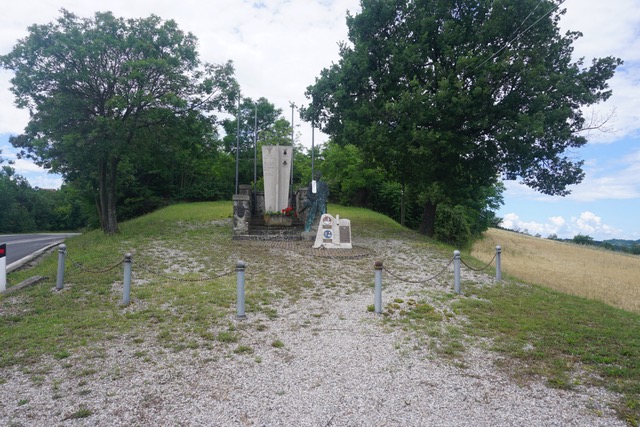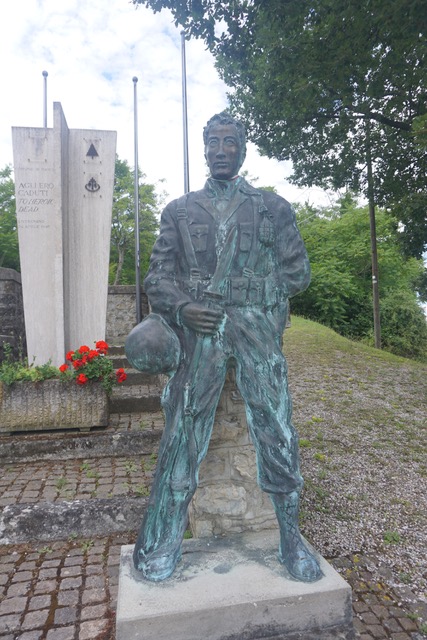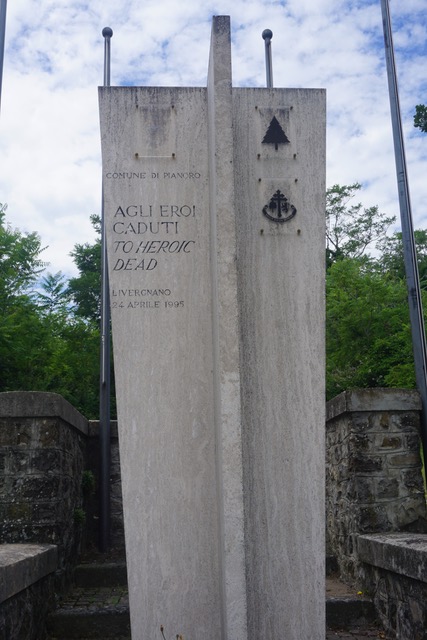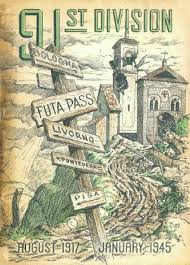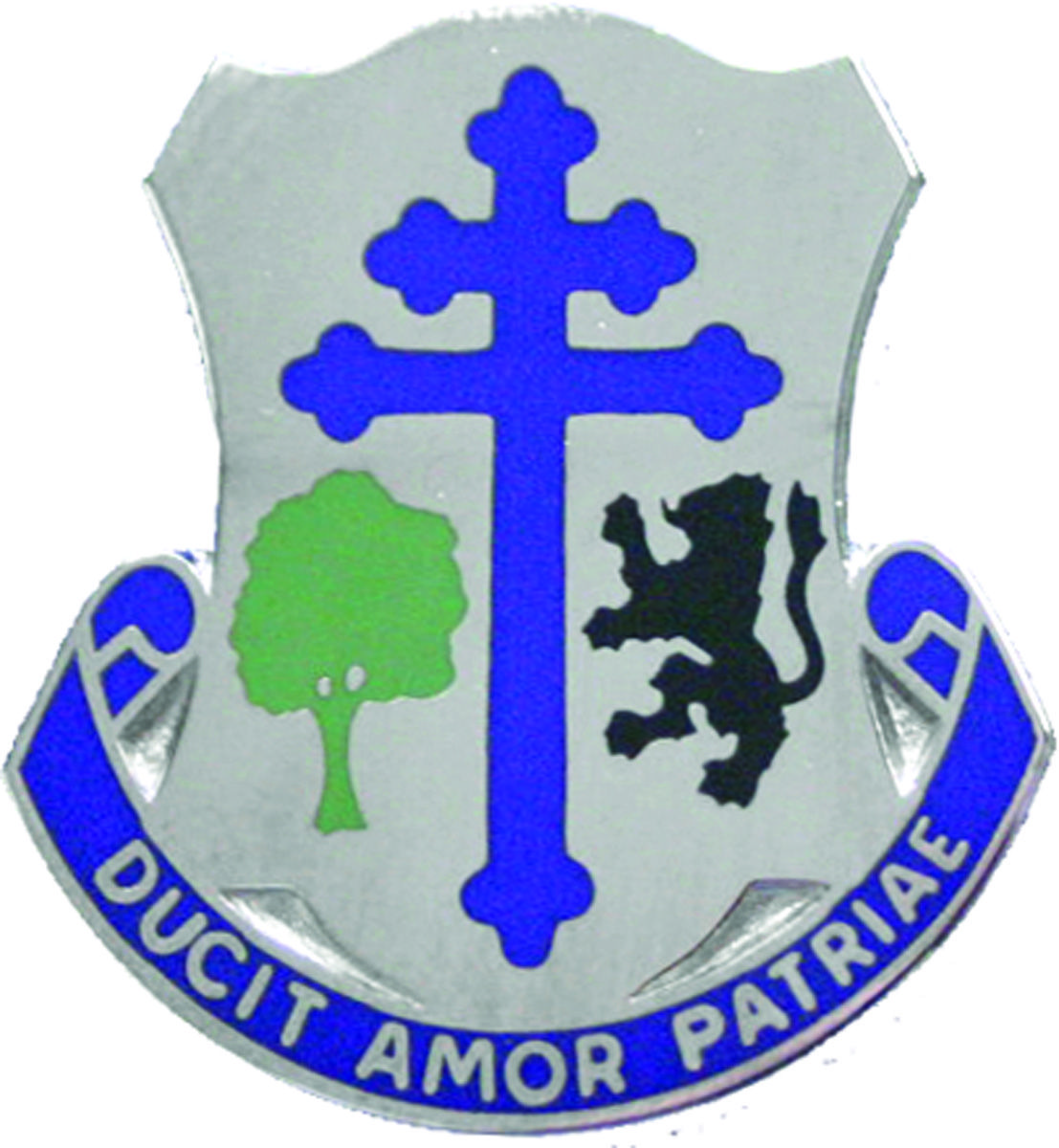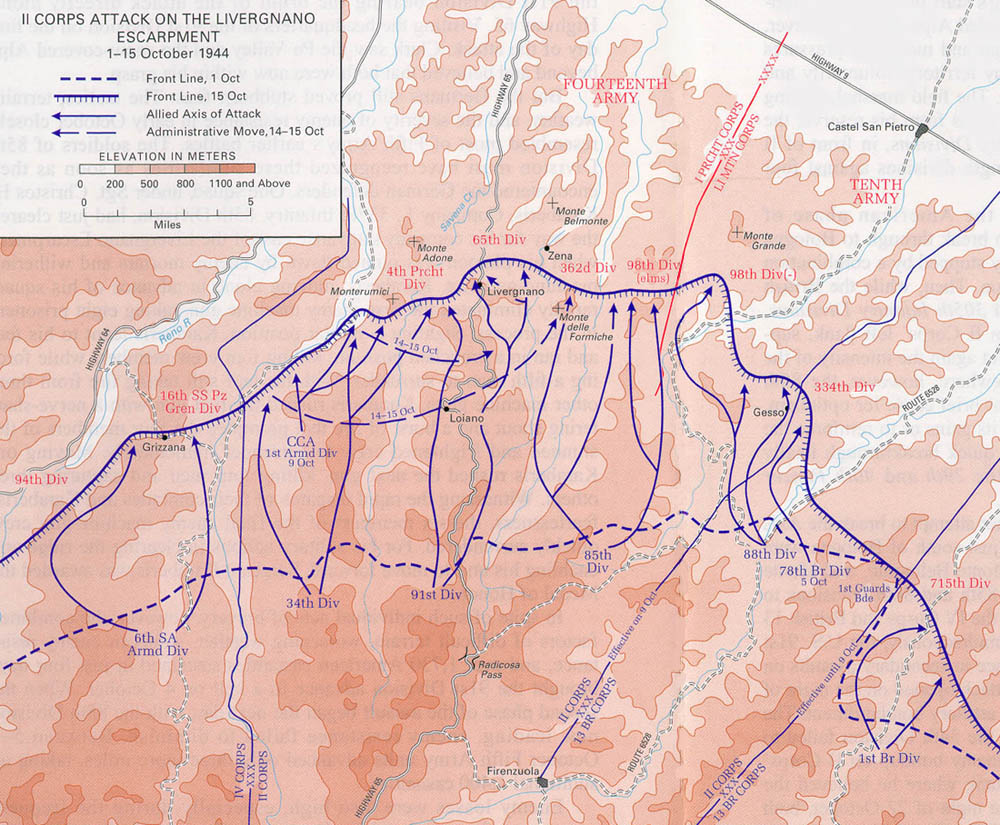91st Infantry Division “Fallen” Monument- Livergano
Details:
On the roadside behind the small monument to the Brazilian Forces that fought in the area.
The monument is made of concrete girders about 9 feet tall with a unit symbols and a short inscription. There is also a replica of a solider statue that was originally part of the monument but was moved to the Florence American Cemetery in Impruneta.
From the 91st Infantry Division "Powder River" History:
The Livergnano also known as “Little Cassino”
{Livergnano was referred to by the GI's as "Liver 'n Onions".}
The Division had come to the most formidable natural barrier between the Santerno and the Po, a rocky escarpment rising at some points over 1,800 feet high. In places, especially in the upper half of the cliff, it is a perpendicular rock wall. From the rock rim the enemy commanded every approach from the south. Rising above the rim was a lateral series of hills: 544 and 603, dominating Highway 65; 504, 481, 592, and 487. Each one was a prepared strong point from which the high plateau lying behind the rock rim could be covered with machine gun and mortar fire. As the Division faced this escarpment it was considerably in advance of its adjacent units, exposed on the right to fire from S. Maria di Zena and M. delle Formiche and on the left to fire directed from M. Adone.
For the attack at 0600, 13 October the artillery laid down a tremendous concentration of 2,120 rounds in 16 minutes. There was better progress all across the Division front during the day, and it became clear that the enemy had at last begun to withdraw under the steady pounding they had received from the bombers, the artillery, and the infantry. Gradually the whole line fell back. Hills 603 and 544 were taken and Livergnano occupied, despite the continued shelling. The 2nd Battalion slowly fought its way northwest, cleaning out the positions along the rim of the escarpment. It rejoined the rest of the 361st Infantry on Highway 65 north of Livergnano. The 363rd Infantry fanned out from the east cut and occupied the right sector of the Division front.
Thus at the end of the day, the lines had been straightened and the flanks secured. With Casolina on the left, Querceta on the right and Hill 603 in the center in the Division's hands, the enemy line, referred to by many of the captured prisoners as the Caesar Line, had been overrun and the escarpment had been conquered. Enemy casualties had been heavy, and many prisoners had been taken--225 on 12-13 October.
The 91st in Four Months of Combat
Thus the 91st Division's first four months of combat during World War II came to a close. During that time it had fought from Rome to Livergnano. From the Gustav Line to the Caesar Line. It captured Chianni, Pontedera, Leghorn, Pisa, Monticelli, M. Calvi, M. Beni, M. Freddi, M. Oggioli, Monghidoro, Loiano, Livergnano. It broke through the Gothic Line, the Berta Line and the Caesar Line. Three times it was the first unit of Fifth Army to achieve the Army objective--on 18 July at Leghorn, on 23 July at Pisa, and on 17 September at Monticelli.
But these are only the names the public knows. These are the places the spotlight has caught. But there are hundreds of houses, crossroads, hills and draws where the men of the 91st fought and died to make the capture of more famous places possible. There are miles of road the Engineers swept for mines, scores of streams they bridged or by-passed so the Division could move forward. There are miles of roads, dusty or muddy, frozen hard or running with water over which the service forces brought food and ammunition to the support of the drive. And sometimes there were no roads, and men and mules carried supplies over narrow precipitous trails. Over the same trails and roads the litter bearers evacuated the wounded swiftly and skillfully. Behind these names lies the courage, determination and combat wisdom of each individual infantryman and each individual artillery man. Again and again the story repeats itself: the artillery blasted a path for the infantry, drove the enemy into his holes the infantry followed up to dig the dazed and shaken enemy from the holes. Behind these names lies the skill, the planning, the labor and the courage of every man in the Division.
Under the command of General Livesay, the 91st Division has made a name for itself as one of the great fighting outfits of the Army. It is feared and respected by the enemy, praised and admired by its allies. It has been a spearhead in every campaign it has taken part in. The 91st Division is a team, a great fighting team, of which every man in the Division is a part. It's a great fighting Division: it has made history
Monument Text:
The text on the monument is written in English and in Italian and reads:
(Symbol of the Community of Pianoro)
Comune di Pianoro
(Community of Pianoro)
AGLI EROI
CADUTI
TO HEROIC
FALLEN
Livergano
24 Aprile 1995
(24 April 1995)
Opposite Side of Monument:
Symbols of the 91st Infantry Division and of the
361st Infantry Regiment, 91st Infantry Division
The monument includes a replica of a statue that was moved to the Florence American Cemetery in Imprunta. See this website Florence American Cemetery, 361st Infantry Regiment, 91st Infantry Division Statue.


